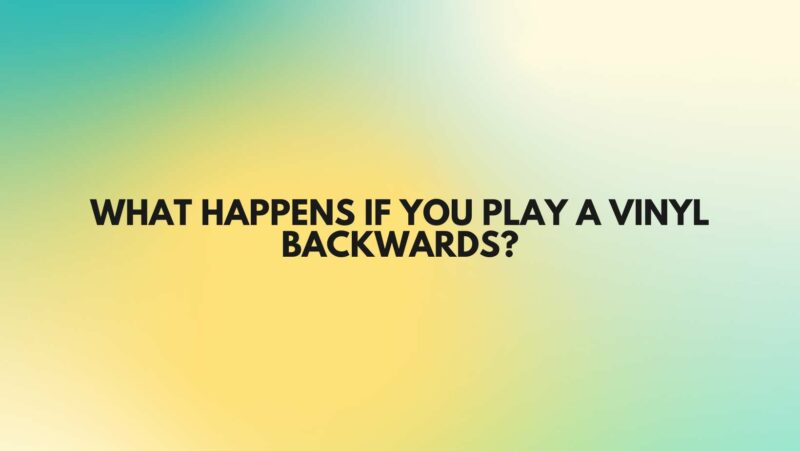Playing vinyl records has always held a sense of mystique and intrigue, with many music enthusiasts exploring the medium’s unique properties and quirks. One of the curiosities associated with vinyl records is playing them backward, a practice often linked to hidden messages, rumors, and urban legends. In this comprehensive exploration, we will delve into what happens when you play a vinyl record backward, the history behind this practice, and its cultural significance.
Section 1: The Mechanics of Vinyl Playback
Before delving into playing records backward, it’s essential to understand how vinyl playback works. Vinyl records feature spiral grooves containing the audio information. When played, a stylus (needle) traces these grooves, causing vibrations that are converted into sound by the turntable’s components. The stylus typically moves from the outer edge of the record toward the center.
Section 2: The Origins and History
The practice of playing records backward has been around almost as long as vinyl records themselves. Some notable aspects of its history include:
- 1960s Counterculture: In the 1960s, the counterculture movement sparked interest in unconventional listening experiences. Musicians like The Beatles and The Rolling Stones experimented with reversed recordings, sometimes hiding messages or unique sounds in their songs.
- Backmasking Controversy: The most famous association with playing records backward is the controversy surrounding alleged “backmasking.” This involved claims that hidden messages could be found when certain songs were played in reverse. The most infamous example is the suggestion that messages related to Satanism could be heard in rock music.
Section 3: What Happens When You Play a Vinyl Record Backward?
When you play a vinyl record backward, several things occur:
- Reverse Audio Playback: The stylus moves from the center of the record towards the outer edge, causing the audio to play backward. This reverses the order of the recorded sounds, making them sound disjointed and often unrecognizable.
- Pitch and Speed Variations: Playing a record backward can alter the pitch and speed of the music. This is because the grooves on vinyl records are designed for forward playback, and the stylus may not accurately track the reverse grooves, leading to fluctuations in pitch and speed.
- Sound Quality Degradation: Reversing the playback direction can cause increased wear and tear on both the stylus and the record’s grooves. This can result in reduced sound quality and potential damage to the vinyl.
Section 4: Urban Legends and Hidden Messages
The fascination with playing records backward has led to numerous urban legends and conspiracy theories about hidden messages. While some artists did experiment with backward sounds for creative effect, many of the claims about subliminal messages remain unsubstantiated.
Section 5: The Artistic and Creative Use of Backward Playback
Despite the controversies and myths, some musicians and sound artists have embraced backward playback as a creative tool. They use it to create unique sonic textures and unconventional musical experiences, often as a deliberate artistic choice.
Section 6: Conclusion
Playing a vinyl record backward can yield intriguing and sometimes mystifying results, but it’s important to approach this practice with an understanding of its historical context and potential effects on your records and equipment. While there may be hidden messages in some songs, they are often more a product of imagination and myth than reality. Ultimately, the appeal of playing records backward lies in the exploration of sound and the mysteries that vinyl records continue to hold for enthusiasts and artists alike.


